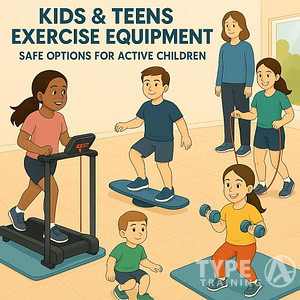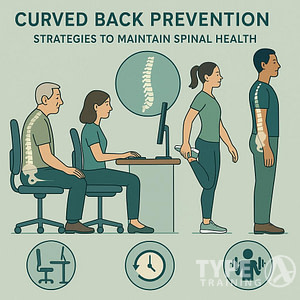Prenatal, postnatal, and postpartum yoga offers a multitude of benefits for expecting and new mothers. Prenatal yoga focuses on gentle stretching, strengthening techniques, and stress-reducing exercises specially designed to support your body through the changes that occur during pregnancy. These techniques help to minimize discomfort, improve posture, and can even help with preparation for labor.
Postnatal and postpartum yoga, on the other hand, are practices designed to help new mothers reconnect with their bodies after giving birth. These forms of yoga can help gently restore strength and flexibility, improve relaxation and mental well-being, and support healing processes. In addition, special poses and modifications are often used to accommodate the unique needs of new mothers and their babies.
Key Takeaways
- Prenatal yoga helps support the body and mind during pregnancy with gentle exercises
- Postnatal and postpartum yoga focuses on reconnecting with the body and supporting healing after giving birth
- Modifications and special poses are used to accommodate the unique needs of new mothers and their babies.
Prenatal Yoga
Benefits of Prenatal Yoga
Prenatal yoga can provide numerous benefits for both you and your baby during pregnancy. It can help improve your posture, relieve discomfort in the lower back and hips, and strengthen your pelvic floor muscles. Additionally, engaging in prenatal yoga can help to reduce stress and anxiety, promote better sleep, and improve digestion.
Popular posts:
By attending prenatal yoga workshops, you can learn techniques to help you manage the emotional and physical changes happening during pregnancy. These sessions can also be a great way to connect with other pregnant individuals, allowing you to share experiences and build a supportive community.
Prenatal Yoga Poses
There are several gentle prenatal yoga poses that can help during pregnancy. Here are a few examples:
- Cat-Cow: This gentle flow between two poses helps to stretch and strengthen your neck, shoulders, chest, and lower back. To perform Cat-Cow, start on your hands and knees with your wrists aligned under your shoulders and your knees underneath your hips. As you inhale, arch your back, tilting your pelvis and lifting your chest and neck. As you exhale, round your back, tucking your pelvis and dropping your head. Repeat this sequence several times.
- Squat Pose: This pose helps to open your pelvis and strengthen your pelvic floor muscles. Stand with your feet slightly wider than hip-width apart, and squat down slowly, keeping your chest lifted. You can use yoga blocks or a folded blanket for support under your hips if needed. Hold the pose for a few breaths, then straighten your legs to stand up again.
- Side Bends: These stretches can help to alleviate discomfort in the sides of your torso and promote better digestion. Stand with your feet hip-width apart and extend one arm overhead, grabbing your wrist with the opposite hand. Gently bend to one side, feeling a stretch along your side body. Hold for a few breaths before returning to center and repeating on the other side.
Precautions and Considerations
Before starting prenatal yoga, consult with your doctor, especially if you have any pregnancy-related complications or concerns. Make sure to choose a yoga teacher who is knowledgeable about prenatal yoga practices and modifications specific to pregnancy.
Be mindful of your body throughout your practice and avoid any poses that cause strain or discomfort. Use yoga blocks, pillows, or other props to provide support and ensure your safety during poses. As your pregnancy progresses, be cautious with balancing poses to minimize the risk of falling. In addition, avoid deep twists and poses that put pressure on your abdomen.
Lastly, pay attention to your breath during prenatal yoga. Breathing in and out slowly and deeply through the nose can help manage shortness of breath during pregnancy and work through contractions during labor. Remember to listen to your body and modify the practice as needed to suit your individual needs and restrictions.
Postnatal Yoga
Benefits of Postnatal Yoga
Postnatal yoga can be a wonderful way to help your body recover after giving birth. Practicing yoga during the postpartum period can strengthen your core muscles, improve posture, reduce back pain, and increase flexibility. Additionally, postnatal yoga may help alleviate symptoms of postpartum depression and provide mental health benefits, as it promotes relaxation, meditation, and stress reduction.
Postnatal Yoga Poses
Before beginning your postnatal yoga routine, it’s essential to consult your doctor, especially if you’re recovering from a cesarean delivery or experiencing complications. Generally, wait for at least six weeks following childbirth to start practicing postnatal yoga.
Some effective postnatal yoga poses include:
- Child’s Pose: This gentle pose stretches your spine, hips, and shoulders, helping to release tension in your lower back and neck.
- Modified Triangle Pose: This pose strengthens your core muscles, improves balance, and stretches your hips and hamstrings.
- Warrior Pose: This pose benefits your legs, hips, and core, while also improving your confidence and endurance.
Remember to use blocks or other modifications to accommodate your postpartum body and make these yoga poses more accessible, especially if you’re experiencing discomfort in your lower back or hips.
Precautions and Considerations
During postnatal yoga, it’s crucial to listen to your body and be mindful of your unique needs. Your body experiences significant changes during pregnancy and childbirth, including the release of the relaxin hormone, which can make your joints more flexible and prone to injury. Be gentle with yourself, and avoid pushing your body beyond its limits.
Pay special attention to your abdominal muscles and pelvic floor, as they may have weakened during pregnancy and childbirth. Some women may experience diastasis recti, a separation of the abdominal muscles, which requires special care and modifications during postnatal yoga. Consult your physician or a specialized yoga teacher for guidance on managing any specific concerns.
Finally, if you’re breastfeeding, ensure you’re comfortable and supported during your postnatal yoga practice. Wearing suitable attire and using proper support, such as a yoga mat, can help make your practice more enjoyable and beneficial to your postpartum body.
Postpartum Yoga
After giving birth, your body undergoes various changes as it starts to recover. Postpartum yoga can be a wonderful tool to support your recovery process, strengthening your body and easing any physical and emotional discomforts. In this section, we’ll discuss the benefits of postpartum yoga and how to recognize postpartum depression and anxiety.
Recognizing Postpartum Depression and Anxiety
Postpartum depression and anxiety are common mental health challenges that many new mothers experience. Practicing yoga can be a helpful addition to your support system during this time. Some signs of postpartum depression and anxiety include excessive worrying, feeling overwhelmed, difficulty concentrating, irritability, and prolonged sadness. If you’re experiencing any of these symptoms, it’s important to speak with your doctor or a mental health professional.
Yoga for Postpartum Recovery
Strengthening Your Core: Postpartum yoga can help you regain strength in your core muscles, which may have been weakened during pregnancy. Focus on poses that activate your abdominal muscles and support your lower back, such as the plank or the bridge pose.
Easing Back Pain: Many new mothers experience back pain due to the shift in weight distribution during pregnancy. To alleviate this discomfort, incorporate poses like the cat-cow and gentle twists that help stretch and strengthen your spine.
Improving Balance and Flexibility: Your body’s center of gravity may feel different after giving birth. Practice poses like the warrior pose and triangle pose to aid balance and flexibility.
Pelvic Floor Health: Your pelvis experiences significant changes during pregnancy and childbirth, which can lead to conditions like incontinence or even diastasis recti. Gentle pelvic floor exercises, such as Kegels, can help address these issues.
It’s crucial to wait at least six weeks after giving birth before starting a postpartum yoga practice, as your body needs time to heal. Make sure to consult with your doctor before beginning any exercise routine. Once you’re ready, consider joining postpartum yoga classes or working with certified yoga teachers who have experience in postnatal practices. They can provide valuable feedback and recommend appropriate modifications to accommodate your postpartum body.
Remember, your postpartum journey is unique, so be patient with yourself and listen to your body. Practicing yoga during this time can help build strength, alleviate physical discomforts, and support your mental and emotional wellbeing.
Yoga for Pregnancy and Birth Support
Yoga can be a wonderful way to support your body and mind throughout pregnancy and postpartum. By practicing prenatal and postnatal yoga, you can improve your overall physical and emotional well-being while preparing for and recovering from childbirth.
During pregnancy, yoga can help strengthen and stretch your pelvic floor muscles while maintaining good posture. It can also help to alleviate common pregnancy symptoms like back pain and balance issues. As you practice yoga, focus on opening your chest, hips, and shoulders while engaging your core abdominal muscles. Always consult your doctor before beginning a yoga practice and seek guidance from a qualified yoga instructor familiar with pregnancy-specific poses.
Yoga poses to include in your prenatal practice might involve the use of props such as blocks to support your lower back and pelvis during poses like bridge or pigeon. Be mindful of your growing belly and make adjustments to your practice as needed. Attending prenatal yoga classes, meditation, and emotional support workshops can also offer support through your pregnancy.
After giving birth, practicing postnatal yoga can help your body make a smoother transition into its pre-pregnancy state. Focusing on poses that engage your core muscles can have significant benefits, promoting muscle recovery and strengthening weakened abdominal muscles. Postnatal yoga can also help address any residual back pain or balance issues.
Some benefits of postnatal yoga include improved posture, strength, flexibility, and emotional support as you navigate life with a newborn. Remember to always listen to your body and consult your doctor before resuming any physical activity post-birth.
In summary, yoga can provide a wealth of support for your body and mind during pregnancy and after childbirth. Embrace this practice as a method to nurture yourself while keeping your changing needs in mind.
Yoga Props and Modifications
During your prenatal, postnatal, and postpartum yoga journey, it’s essential to prioritize safety and comfort. Utilizing yoga props and making modifications to your practice can help you achieve that.
Yoga Blocks: Having a couple of yoga blocks nearby can significantly enhance your practice. They can be placed under your hands in standing poses or under your hips in seated poses, providing support and stability. Additionally, they come in handy when you need assistance with balance or when your range of motion is limited.
Yoga Mat: Invest in a good-quality yoga mat, which will provide a non-slip surface for your practice, ensuring your safety and encouraging proper alignment in your poses. Look for one with extra cushioning to support your joints and make your practice more comfortable.
Modifications: Adapting your yoga poses during pregnancy is crucial to keep you safe and comfortable. In the first trimester, it’s wise to avoid twists, focusing instead on gentle movements. In the second and third trimester, gentle open twists without compression on your belly are recommended. Modifications can be as simple as widening your stance in standing poses to accommodate your growing belly or using a chair for extra support in balance poses.
When practicing yoga during pregnancy and postpartum, it’s important to listen to your body and make adjustments as needed. For example, if you experience discomfort in your lower back, avoid deep backbending poses such as cow pose; opt for gentler variations instead.
To ensure you’re practicing safely, consider attending certified yoga classes specifically designed for pregnant and postpartum women. These classes will help you build confidence and learn the appropriate modifications for your individual needs.
Remember that every pregnancy and postpartum journey is unique, so take your time, make modifications, and find the right balance in your yoga practice to support your well-being during this special time.
Yoga and Breastfeeding
Breastfeeding can be both a rewarding and challenging experience for new mothers. Incorporating yoga into your postpartum routine can help address some of the physical and emotional challenges associated with breastfeeding.
Practicing yoga can offer numerous benefits for breastfeeding mothers. It helps strengthen your core muscles, which can alleviate the strain on your lower back and abdominal muscles caused by holding your baby during feedings. Additionally, yoga can help improve chest and shoulder flexibility, making it more comfortable to maintain a good breastfeeding posture.
There are specific yoga poses that can be particularly beneficial for breastfeeding mothers. For instance, gentle chest openers and backbends can counteract the hunched posture that often comes with breastfeeding. Reclining poses with a block under the upper back can also help open the chest and promote deeper, more restorative breathing.
Breastfeeding mothers often experience emotional challenges such as postpartum depression or anxiety. Yoga can serve as a valuable tool in managing these emotions. The practice of mindful breathing and relaxation techniques during yoga can help you to reduce stress and foster a sense of calm during this demanding period.
Remember to always listen to your body and avoid pushing yourself too hard during your postpartum yoga practice. It is essential to allow your body the time it needs to heal and regain strength after childbirth. If you experience any pain or discomfort during a yoga session, stop or modify the pose.
Incorporating yoga into your postpartum routine can create a positive impact on your overall well-being, making the breastfeeding journey more comfortable and enjoyable for both you and your baby.
Yoga and Motherhood
Yoga has long been recognized as a way to promote physical health and emotional well-being. For new mothers, postnatal yoga can offer numerous benefits that make it an ideal holistic practice throughout the journey of motherhood. In this section, we will explore how yoga helps support mental health, confidence, and spiritual growth for mothers during prenatal, postnatal, and postpartum stages.
As you progress through your pregnancy, you may find that regular yoga practice helps maintain your emotional health. Prenatal yoga focuses on stretching and strengthening exercises, combined with breathing techniques, to prepare your mind and body for childbirth. By practicing yoga consistently, you can boost your confidence and alleviate stress and anxiety during this transformative time.
After giving birth, it is advised to wait at least six weeks before engaging in postnatal yoga. This gentle practice is tailored to support recovery and address the physical and emotional challenges of motherhood such as lack of sleep and heightened sensitivity. These post-pregnancy yoga classes can strengthen your body, improve flexibility, and assist in healing from the birthing process. Additionally, postnatal yoga provides an opportunity to bond with your baby and connect to your inner self, fostering a deep spiritual connection.
Yoga can be a valuable tool in managing mental health for new mothers. It encourages mindfulness, letting you focus on the present moment and release negative thoughts. Regular practice can lead to reduced stress levels, increased self-awareness, and overall emotional well-being. Moreover, the relaxation techniques used in yoga can promote deep sleep, which contributes to better mental and physical health in the demanding postpartum period.
In summary, incorporating yoga into your routine during prenatal, postnatal, and postpartum stages of motherhood can support your physical, emotional, and spiritual health. By nurturing mindfulness, self-awareness, and relaxation, yoga provides a powerful platform for growth, healing, and connection during this extraordinary journey.
Related Post
Frequently Asked Questions
What are the best postnatal yoga poses?
There are several postnatal yoga poses that can be beneficial for your recovery and overall well-being. Some effective poses include Extended Puppy Pose (Uttana Shishosana), Legs Up the Wall (Viparita Karani), and gentle twists. It’s important to focus on poses that promote stretching, strengthening, and relaxation.
How soon can I start postpartum yoga?
The timeline for starting postpartum yoga varies depending on your personal circumstances and recovery. Generally, it is safe to begin practicing gentle yoga after getting clearance from your healthcare provider, usually around 6 weeks postpartum. However, always consult your doctor before starting any exercise program, especially after giving birth.
What are the benefits of postnatal yoga?
Postnatal yoga offers several benefits for new mothers. It can help you reconnect with your body, improve strength and flexibility, reduce stress, and promote relaxation. Additionally, some poses can address specific postpartum issues such as diastasis recti or pelvic floor weakness.
Can prenatal yoga help with postpartum recovery?
Yes, participating in prenatal yoga during your pregnancy may make postpartum recovery easier. By practicing prenatal yoga, you are strengthening your body and maintaining flexibility, which can prepare you for the physical demands of childbirth and postpartum recovery.
Is it safe to do yoga during postpartum?
Yoga can be a safe and effective way to recover during the postpartum period, but it’s essential to listen to your body and follow your healthcare provider’s guidance. Start with gentle, restorative poses and gradually build up to more advanced postures as your body heals and you feel ready. Always prioritize your recovery and well-being over achieving specific poses.
What is a recommended postnatal yoga sequence?
A sample postnatal yoga sequence might begin with a few minutes of seated meditation, followed by gentle stretches like neck and shoulder rolls. Proceed with poses like Extended Puppy Pose, Cat-Cow stretches, and Legs Up the Wall. Finish with a final relaxation pose like Corpse Pose (Savasana). However, remember to customize your practice to suit your personal needs and consult with a yoga instructor or healthcare provider for guidance specific to your postpartum journey.












